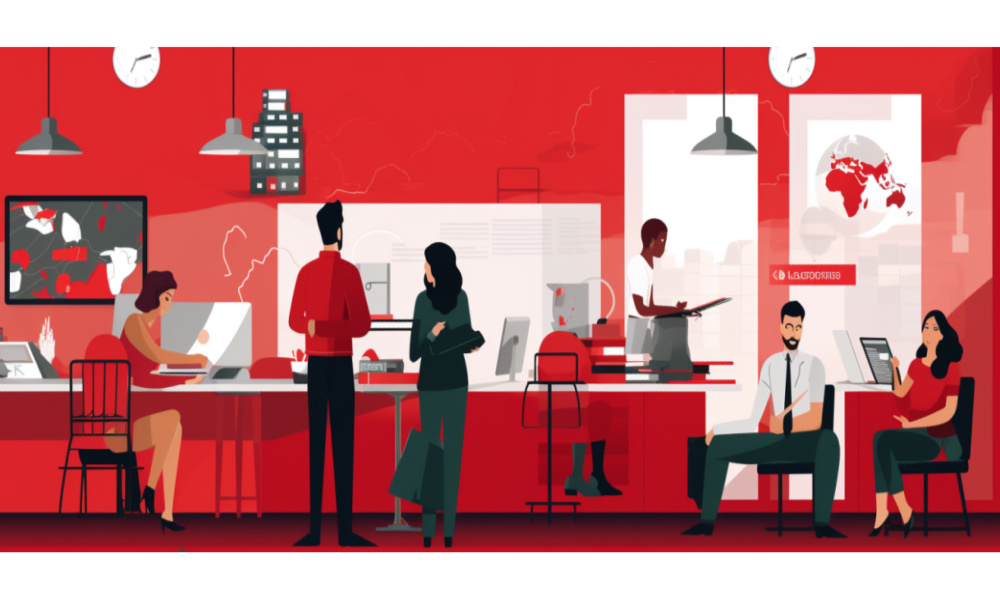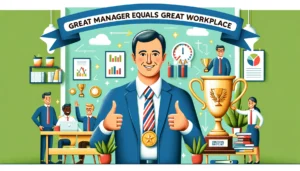Tech-savvy businesses are urged to ensure employees are their top priority
- 5 Min Read
Jan Laurijssen and Lorenzo Andolfi of SD Worx explain how people technology can hold the key to success
- Author: Rob Griffin
- Date published: Oct 24, 2023
- Categories

Digitization is transforming the workplace, but businesses must ensure their employees’ needs are not being overlooked, according to Jan Laurijssen, HR evangelist at HR solutions provider, SD Worx.
“Technological changes have accelerated since Covid-19 and the importance of human interactions can get forgotten when all the various processes are being digitized,” he explained.
But Laurijssen warned that companies failing to build strong relationships with employees could end up losing out in the war for talent to their more focused rivals. “It’s all about rebalancing the employer-employee relationship and deciding what’s necessary for both the digital advancement of the business and the human element,” he said.
This is why innovative businesses navigating evolving digital workplaces must embrace people technology, pointed out Lorenzo Andolfi, a senior researcher at SD Worx. “We looked at how companies operated and noticed some were focused on process-oriented technologies, while others concentrated more on the human side,” he said.
Embracing the four profiles
This revelation resulted in SD Worx creating a four-stage journey that encourages management teams to assess where they should be focusing their attention. “The first stage looks at how to make core transactional processes, such as payroll and workforce management, more efficient,” he said. “The main benefits of these are to the employer.”
The second stage involves looking at how to optimize benefits for employees, such as mobile apps on which they can look up their payslips and source other information about the company. “The third stage is where human orientation really comes into place,” added Andolfi.
“These are tools that can increase personal growth and productivity, such as those helping collaboration.” The final stage, meanwhile, ties everything together. It looks at how an ecosystem can be created to connect and integrate all these different tools seamlessly.
“Every company has different needs so it’s a case of finding out what could make their lives easier and how to optimise solutions with the investments they’re prepared to make,” he added.
What is clear, however, is that it is increasingly important for companies to foster relationships with their employees that are more than transactional, according to Andolfi. “An important trend at the moment is the personalization of that employee relationship,” he said. “This is helping to build an organization’s competitive edge.”
Changing work-life balance
According to Laurijssen, businesses willing to focus on these four profiles can benefit from operational efficiencies, reduced errors, and increased agility, as well as plenty of data.
“There’s also a focus on the employee experience,” he added. “This is one of the most important objectives, especially in a tight labor market.”
Competition to attract talent is fierce, he pointed out, with the new breed of workers growing up in an environment that has encouraged having enjoyable lives outside the office. “Employees realized during Covid that working from anywhere, facilitated by all sorts of tools, was possible,” he explained. “It’s created a sense of understanding about work-life balance.”
Laurijssen pointed out that some people will define work-life balance as being in the office at 9am and leaving the laptop in the office when they clock off at 5pm. “Then you have digital nomads who want to go on holiday for a few months,” he explained. “They may only want to work in the mornings and then go surfing in the afternoons.”
The most successful businesses of the future, he believes, will be those that have the structure in place to cater to these different requirements. “Companies need to be aware that in order to keep employees, and maintain their competitive advantage, they must take steps into digitization,” he added.
Of course, these are economically challenging times and Laurijssen acknowledged that the financial implications of this four-stage approach can be seen as an obstacle. “That’s why companies should look at it as an investment over time,” he said. “If they don’t want to invest in this personalization then the risk is that they’re going to start losing valuable employees.”
What does the future hold?
It is also vital not to overlook the rise of artificial intelligence and the impact this is expected to have in virtually every industry over the coming years. This point was highlighted in a recent report from the Organization for Economic Co-operation and Development (OECD).
While noting firms’ adoption of AI was still relatively low, it suggested OECD companies could be on the brink of an AI revolution due to rapid progress, falling costs, and more workers with AI skills.
“It is vital to gather new and better data on AI uptake and use in the workplace, including which jobs will change, be created or disappear, and how skills needs are shifting,” it stated.
Laurijssen believes AI will have a significant impact and argued that companies that embraced this reality early will be a step ahead of their competition. “Some jobs are going to disappear, but others will be created that we never could have imagined,” he explained. “We’ll all need to invest massively to help people make the changes.”
Discover your profile here and gain insights on how to evolve your HR strategy.









